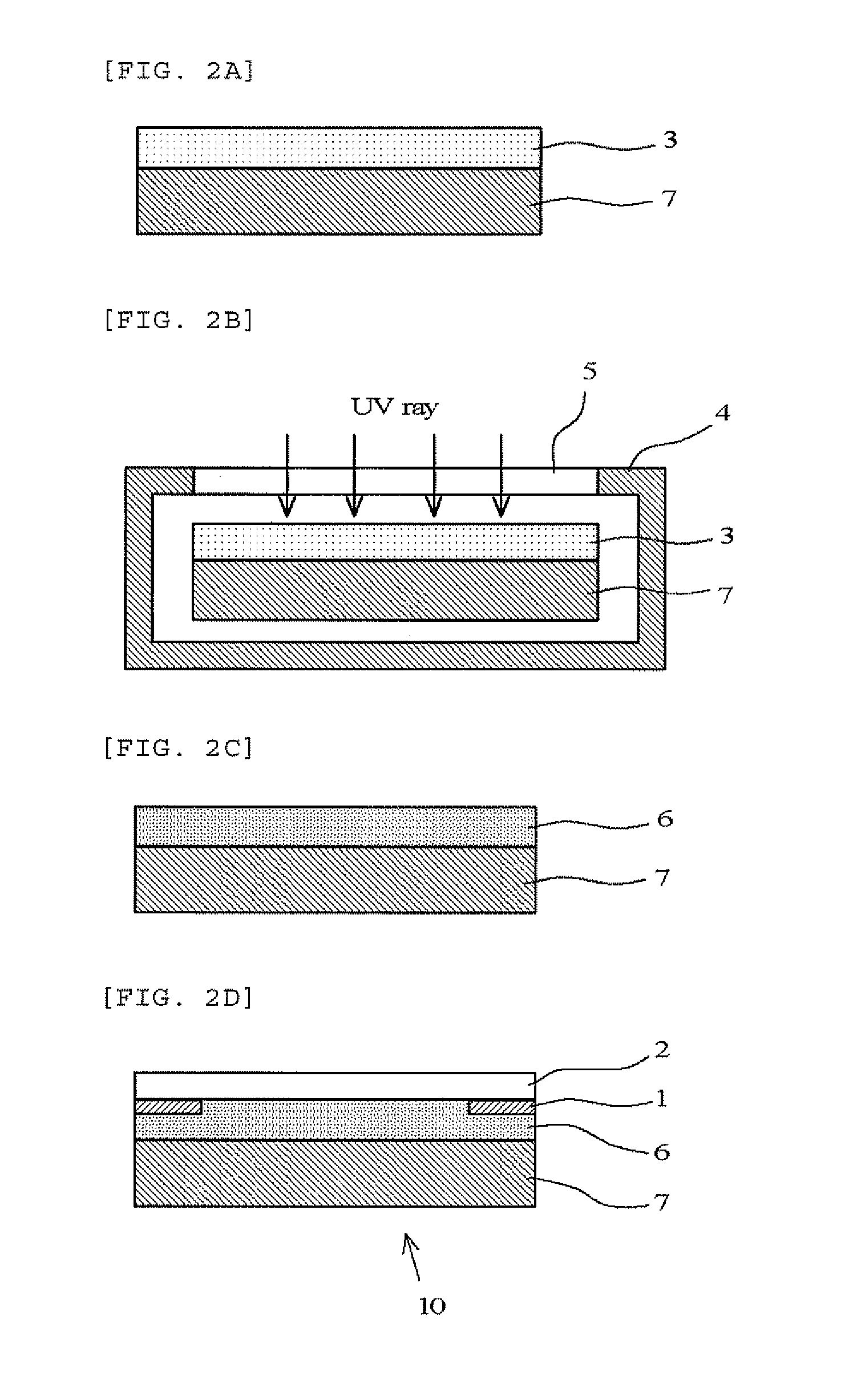Method for manufacturing image display device
a technology of image display and resin composition, which is applied in the direction of identification means, instruments, optics, etc., can solve the problems of insufficient curing of photocurable resin composition interposed between such a light-shielding layer and the image display member, and inability to obtain sufficient adhesion for
- Summary
- Abstract
- Description
- Claims
- Application Information
AI Technical Summary
Benefits of technology
Problems solved by technology
Method used
Image
Examples
example 1
[0063]6 Parts by weight of polyisoprene methacrylate (UC102, KURARAY CO., LTD.) as a photocurable resin composition, 15 parts by weight of dicyclopentenyloxyethyl methacrylate and 5 parts by weight of lauryl methacrylate as reactive diluents, 20 parts by weight of polybutadiene (Polyvest110, Evonik Degussa GmbH) as a plasticizer, 1 part by weight of photopolymerization initiator (IRGACURE 184, BASF), and 53 parts by weight of hydrogenated terpene resin (Clearon M105, YASUHARA CHEMICAL CO., LTD.) as a tackifier were uniformly mixed and prepared. The viscosity of the photocurable resin composition (cone-plate rheometer, 25° C., cone and plate: C35 / 2, rotation speed: 10 rpm) was about 6 Pa·s.
(Step (A) (Applying Step))
[0064]The photocurable resin composition was then discharged onto a glass plate having a light-shielding layer with a size of 40 (w)×70 (1)×0.4 (t) mm by a resin dispenser, to form a photocurable resin composition film with an average thickness of 200 μm.
(Step (B) (Curing ...
example 2
[0077]A liquid crystal display device and a glass bonded body for measurement of adhesion strength were manufactured in the same manner as in Example 1 except that the degree of reduced pressure inside the chamber was changed to 100 Pa in the step (B) (curing step) of Example 1. The presence or absence of air bubbles was observed and the adhesion state was evaluated. As a result, the cure rate of the outermost surface of the light-transmitting cured resin layer was 92% and the cure rate of the entire light-transmitting cured resin layer was 93%. The evaluation of creep under a heating environment was “A,” and the evaluation of adhesion state under a heating environment was also “A.”
example 3
[0078]A liquid crystal display device and a glass bonded body for measurement of adhesion strength were manufactured in the same manner as in Example 1 except that the pressure inside the chamber was not reduced and the air inside the chamber was replaced with nitrogen in the step (B) (curing step) of Example 1. The presence or absence of air bubbles was observed and the adhesion state was evaluated. As a result, the cure rate of the outermost surface of the light-transmitting cured resin layer was 95% and the cure rate of the entire light-transmitting cured resin layer was 96%. The evaluation of creep under a heating environment was “A,” and the evaluation of adhesion state under a heating environment was also “A.”
PUM
 Login to View More
Login to View More Abstract
Description
Claims
Application Information
 Login to View More
Login to View More - R&D
- Intellectual Property
- Life Sciences
- Materials
- Tech Scout
- Unparalleled Data Quality
- Higher Quality Content
- 60% Fewer Hallucinations
Browse by: Latest US Patents, China's latest patents, Technical Efficacy Thesaurus, Application Domain, Technology Topic, Popular Technical Reports.
© 2025 PatSnap. All rights reserved.Legal|Privacy policy|Modern Slavery Act Transparency Statement|Sitemap|About US| Contact US: help@patsnap.com



